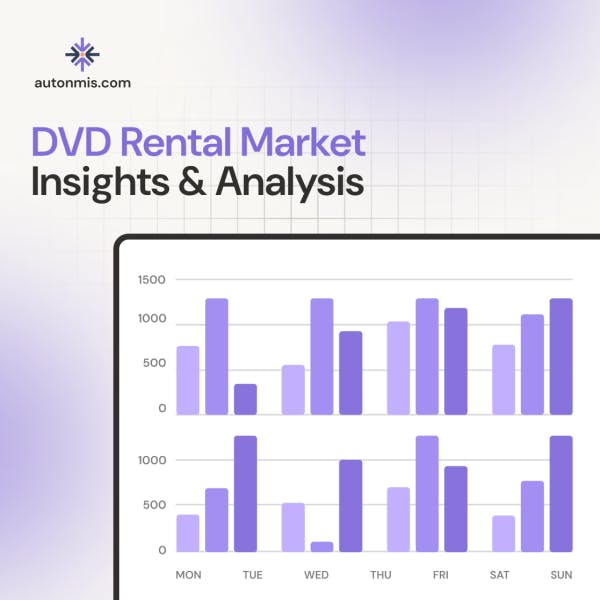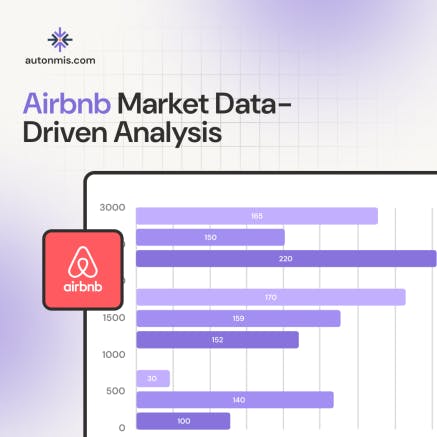🎉 Get Started for Free! Autonmis Starter is Free for Individuals!
🚀 Launching Autonmis Co-Create : Get in touch!
🎉 Get Started for Free! Autonmis Starter is Free for Individuals!
🚀 Launching Autonmis Co-Create : Get in touch!
🎉 Get Started for Free! Autonmis Starter is Free for Individuals!
🚀 Launching Autonmis Co-Create : Get in touch!
🎉 Get Started for Free! Autonmis Starter is Free for Individuals!
🚀 Launching Autonmis Co-Create : Get in touch!
2/6/2025

Manas Mehrotra
Strategic Analysis of Grocery Retail Performance
This dataset consolidates sales transactions, customer interactions, inventory management, and marketing performance data from a mid-sized grocery chain. It integrates da...
Strategic Analysis of Grocery Retail Performance
Introduction
The grocery retail industry is facing complex challenges in harmonizing customer data across various touchpoints, including physical stores, e-commerce platforms, and loyalty programs. These challenges hinder the optimization of operations and the delivery of a personalized shopping experience. Fragmented customer data, seasonal demand fluctuations, and intense competition often result in missed sales opportunities, inefficient marketing efforts, inventory imbalances, and higher customer churn. This case study focuses on addressing these issues by developing a unified data pipeline and analytics solution for a mid-sized grocery chain. By consolidating data into a centralized model, the goal is to enhance operational efficiency, improve customer engagement, optimize marketing strategies, and drive revenue growth through informed decision-making.
Objectives
1) Improve customer lifetime value (CLV) by targeting high-value customers and reducing churn through personalized engagements.
2) Streamline inventory management by refining demand forecasting and tracking fulfillment rates, while optimizing stock levels and turnover ratios.
3) Assess the ROI of marketing campaigns and identify the most profitable channels and promotions to maximize marketing spend.
4) Understand sales trends across seasons and adjust marketing spend and inventory levels accordingly to drive higher sales.
5) Utilize actionable insights to support growth strategies, including effective cross-selling and upselling opportunities, along with tailored promotions.
Key Analysis Questions
1) Which customer segments contribute the most to revenue, and how can they be targeted to improve customer retention?
2) How effective is the current inventory management system across stores, and where can improvements be made in stock management and demand forecasting?
3) Which marketing campaigns and channels provide the highest return on investment, and how can marketing strategies be optimized for better engagement?
4) What are the key drivers of seasonal sales trends, and how can marketing and inventory strategies be adjusted to capitalize on these patterns?
5) Which product categories generate the highest revenue, and how can inventory levels be optimized to meet customer demand more effectively?
6) How can high-value customers be identified and engaged to maximize their lifetime value and increase overall business profitability?
Data Transformation
To enable better analysis and to provide more actionable insights, various data transformation and update steps were performed. These steps focused on cleaning, enriching, and structuring the data for efficient querying and analysis. Below are the transformations performed on key tables like customer feedback, inventory tracking, historical forecasts, and stores.
SQL Queries for Data Transformation:
1) Cleaning Customer Feedback Ratings
Purpose: Cleanses the customer feedback ratings by removing non-numeric characters, ensuring that ratings are stored in a consistent numeric format for analysis.
2) Updating Inventory Tracking Information
Purpose: Adds new columns for reorder status, stock difference, and reorder quantity, helping track inventory levels and stock management. The data is transformed to reflect the current stock status, assisting in inventory decision-making.
3) Calculating Percentage Change and Forecast Accuracy
Purpose: Calculates the percentage change between actual and forecasted sales quantities and determines forecast accuracy. This analysis is crucial for evaluating forecast performance and improving future projections.
4) Updating State Information for Stores
Purpose: Adds state information for each store based on its city. This enables location-based insights and helps in analyzing regional trends across stores.
Merging Data Tables
To facilitate the analysis and ensure a cohesive understanding of sales and marketing performance, the data from various sources were consolidated into a unified table. This preparation step enables efficient querying and comparison across different datasets, including sales transactions, promotions, campaigns, marketing channels, payment methods, and campaign linkages.
SQL Query for Merging Data Tables:
Purpose: The table consolidates sales, promotions, campaigns, and marketing channel data to analyze performance, evaluate ROI, and track the impact of marketing efforts on sales.
Data Analyses and Insights
Key Performance Indicators (KPIs)
Total Sales Revenue
Insight: This KPI measures the total revenue generated from all sales transactions, providing an overall financial picture of the business's performance.
Average Feedback Rating
Insight: This KPI calculates the average customer feedback rating, helping to assess overall customer satisfaction and identify areas for improvement.
Overall Inventory Stock Level
Insight: This KPI measures the total stock level across all products, aiding in inventory management and ensuring optimal stock availability.
Average Time Spent per Customer
Insight: This metric calculates the average time customers spend interacting with the business, providing insights into customer engagement and service effectiveness.
Detailed Analyses
Customer Lifetime Value (CLV) Calculation
Insight: This analysis identifies the top 10 customers contributing the most revenue, helping prioritize high-value customer segments for loyalty and retention strategies.
Customer Engagement by Channel
Insight: This analysis evaluates customer engagement across channels, highlighting the most effective channels for targeting and optimizing marketing strategies.
Campaign ROI Analysis
Insight: This analysis identifies the most profitable campaigns by calculating the ROI, helping to optimize future marketing investments.
Loyalty Program Effectiveness
Insight: This metric evaluates the effectiveness of loyalty programs by tracking participation, points earned, and redeemed, indicating the program's impact on customer loyalty and engagement.
Most Popular Products
Insight: This analysis identifies the top 10 products with the highest sales, offering insights into popular products that drive business performance and inform inventory decisions.
Store-Wise Sales and Inventory Analysis
Insight: This analysis helps assess inventory management and sales performance across store locations, guiding operational efficiency and stock optimization.
Insights
- Overall Business Performance:
- Total sales revenue: $335.57MAverage feedback rating: 3.44 (indicating room for improvement)Total stock level: 53,403 (ensuring supply stability)Average customer time spent: 71.36 minutes (strong in-store engagement)
- Top Products, Markets & Engagement:
- Best-selling product: 'Libero' (75,240 units)Top market: Pune ($49.62M in sales)Leading feedback topics: 'Service' (324) and 'Product Quality' (267)Highest engagement channel: Text Messages (80.6 min avg. engagement time)
- Marketing & Customer Value:
- Most profitable campaign: 'End of Season' ($179.47M ROI)Most engaging campaign: 'Search Engine Marketing' (71 engaged customers)Highest lifetime value customer: Ali Armstrong ($71.94M LTV)Highest loyalty balance: Floyd Lowery (949.91 points)
- Category Revenue, Demographics & Inventory:
- Highest revenue-generating category: Mitzie Keller ($32.91M revenue)Dominant customer demographic: 18-35 age group (799 customers)Preferred payment method: Digital Wallets (2,779 transactions)Low-stock item: IKEA Wardrobes Comfort (15 units, -35 deficit)Best inventory management: Khalilah Neal (61,152 units in stock)
- Loyalty, Promotions & Fulfillment:
- Customer with highest total time spent: Jonelle Jensen (1,320 min)Highest loyalty balance: Floyd Lowery (949.91 points)Best-performing promotion: Discount Promotion (481,358 units sold, $337.41M revenue)Top fulfillment status: 'Out for Delivery' (281 orders)Loyalty memberships: Evenly distributed across genders
Conclusions
This analysis of the grocery retail industry provides a comprehensive framework for addressing the key challenges faced by businesses in optimizing customer experience, operational efficiency, and marketing effectiveness. By integrating data from various sources, this project has successfully identified critical insights that will allow the grocery chain to streamline inventory management, enhance customer engagement, and improve the ROI of marketing campaigns.
The findings highlight the importance of understanding customer behavior, optimizing product offerings, and using targeted strategies to boost loyalty and retention. Additionally, by leveraging seasonal trends and regional sales data, the business can better align its inventory and promotional strategies to maximize sales and minimize stock imbalances.
Overall, the implementation of a unified data pipeline and advanced analytics solutions will empower the business to make data-driven decisions that drive growth, improve profitability, and ensure a personalized shopping experience for customers. This approach will ultimately contribute to long-term success and a competitive advantage in the rapidly evolving grocery retail market.
Get started with Strategic Analysis of Grocery Retail Performance
Click below to copy this free template.
Recommended Templates

1/15/2025

Manas Mehrotra
DVD Rental Market Insights and Performance Analysis

1/10/2025

Manas Mehrotra
Airbnb Market Intelligence: A Comprehensive Data-Driven Analysis
Simplify your Data Work
For Enterprises, discover how scaleups and SMEs across various industries can leverage Autonmis
to bring down their TCO and effectively manage their Business Analytics stack.